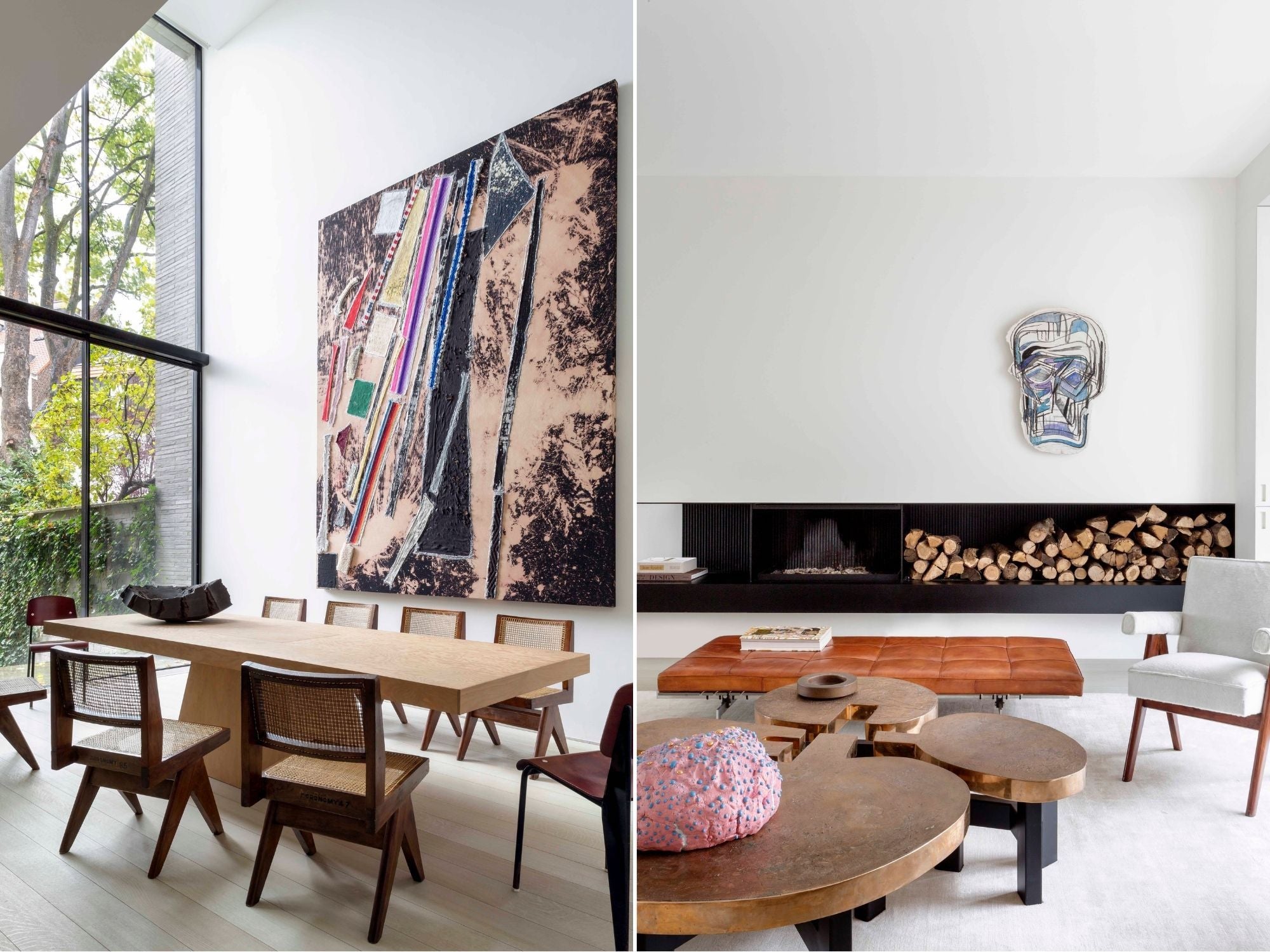Design Legends
Olivier Dwek
Each week, design doyenne Daniella Ohad talks with an industry-defining legend of interior design
This fall, Daniella Ohad hosts Interior Design: The Legends, a weekly virtual program presented in partnership with AIA New York and ASID New York, comprising one-on-one interviews with the world’s leading, most admired interior designers. For the Design Miami/ Forum, Ohad recaps the highlights from each conversation.

“Olivier Dwek is one of the few architects I have met who combines a sense of space with a deep knowledge of modern art and design. He creates more than buildings; he fashions full environments.” —Philip Jodidio, architecture critic
The audience of last week’s Interior Design: The Legends program was completely taken with Belgian architect Olivier Dwek. It was not only because his interiors are polished to perfection and carefully curated with blue chip art and design. And it was not only because of his many impressive achievements in couture architecture and the way he masterfully connects interiors to their spectacular environments. Mainly it was thanks to his authentic story. Driven by a strong passion for the arts, which sprouted at a very early age, Dwek is grateful. He feels lucky to be commissioned by collectors and cultural foundations to create buildings that host art—and to be working with clients who allow him not only to manifest his vision but also to publish the results publicly.
At 29, a recent graduate from the Victor Horta Faculty of Architecture at the Free University of Brussels, he was hired by Louis Vuitton to design the brand’s Brussels boutique. This milestone was the foundation upon which his highly successful career and unique architectural philosophy was built.

Artwork stands at the center of Dwek’s universe. For him, the architect’s role is to create settings that optimally illuminate the art within. Architecture, in his view, is successful if and only if it lets the art shine—which means bringing in as much natural light as possible. No artificial light, he says, no matter how fine and technologically savvy, can compete with natural light when it comes to showcasing and living with art.
Dwek’s favorite architects, Mies van der Rohe and Renzo Piano, are both known for creating architecture defined by natural light. His favorite building, Piano’s Fondation Beyeler in Basel, expresses this notion well, with its famed glass-louvered roof that adjusts to control and filter sunlight in the interior. The museum celebrates the extraordinary art collection of legendary Swiss art dealer Ernst Beyeler as well as the bucolic landscape that surrounds it—old-growth trees, water lily ponds, vineyards, and the foothills of the Black Forest. Dwek calls the Beyeler building the “ultimate expression of architecture.”
We also discussed a smaller, lesser known museum that pioneered the use of natural light in the presentation of art. The Museum of Art Ein Harod in Israel, built in the 1930s by Shmuel Bickels, features a roof sculpted into a series of waves that conceal windows and domes, allowing light to reflect over the walls while obscuring its source. Piano visited the museum in the early 1980s with his client Dominique de Menil while planning the home of The Menil Collection in Houston.

Our journey into Dwek’s vision continued on to the Greek island of Zante, where he completed two residences, both built from scratch, composed of solid volumes, and beautifully integrated into the local environment, which is known for its deeply hued sea, mountainous plateau, and steep cliffs. The two houses are barely perceptible within the powerful landscape. Like many of his projects, Dwek’s point of departure was a single work of art. In the so-called Australian House, it was Yves Klein’s iconic blue pigment, International Klein Blue, set in conversation with the site’s natural blues of sky and water and the stark whiteness of the stuccoed walls. To furnish the home, Dwek selected remarkable 20th-century pieces by the likes of George Nakashima, Finn Juhl, Jean Prouvé, and Charlotte Perriand. As is typical of Dwek’s work, every object is a sculptural statement that seems, magically, to be made for the space in which he places it.

For a three-story townhouse in Brussels, Dwek explored a narrative tailored to an urban rather than coastal setting, one that brings together three eras under one roof, and yet his signature approach remains clearly recognizable. He completely restored the Beaux-Arts bones of the building, originally constructed in 1912, including the limestone façade, wrought iron staircase, curved windows, and Neoclassical moldings. He then composed the interior with a sophisticated mix of modernist furniture and contemporary art. Natural light penetrates into the interior through three facades, illuminating masterpieces by Charlotte Perriand, such as the Shadow chair and an early Free-Form table, alongside outstanding paintings by Christopher Wool and Thomas Houseago, all carefully curated to converse with one another.

A new monograph published by Rizzoli highlights nine of Dwek’s interiors and underscores his preference for certain paradigm-shifting furniture designers from the last century. George Nakashima, for instance, the tranquil New Hope studio of whom Dwek visited two years ago and found profoundly inspiring. There’s also Belgian furniture designer Ado Chale, whom Dwek met when he was a child and whom he calls Brussels' best designer. And of course there is the holy trinity of mid-century French design: Jean Prouvé, Charlotte Perriand, and Pierre Jeanneret, whose singular modernist expressions can be found in Dwek’s projects for the last two decades.
What did we learn from Olivier Dwek? That architecture should be subservient to art and not the other way around, that architects must always educate their clients, and that sophisticated, educated taste should look effortless. ◆
Open to the public, Interior Design: The Legends runs once a week between October and December. Register here. The series offers 14 units of continuing education credits with the International Design Continuing Education Council (IDCEC).
